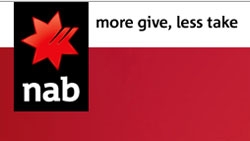Australia's NAB faces class action on toxic debt
 |
The class action, involving about 250 institutional and retail investors, relates to a massive plunge in NAB's shares in July 2008 after it revealed a marked deterioration in investments linked to US sub-prime mortgages.
NAB's share price dived almost 20 per cent in three days after the announcement of an $830 million charge related to the portfolio, just two months after a $181 million hit on the same investments.
Maurice Blackburn, the firm bringing the lawsuit, said NAB had information to suggest the sub-prime market was unravelling as early as 2006 and its failure to adequately warn investors caused enormous losses.
"Maurice Blackburn says that by January 1, 2008 it was evident to anyone following these sorts of collateralised debt obligations that there was a serious exposure and a serious risk of losses," said Maurice Blackburn principal Andrew Watson.
"NAB should have revealed the extent of that exposure on January 1, 2008. It didn't."
Watson said investors were seeking $450 million in losses in the case, which was filed Thursday in the Victorian Supreme Court.
"Our case is that the objective evidence is simply inconsistent with NAB's proposition that all of this emerged in two months of deterioration between May and July of 2008," he said.
NAB and Australia's other three major banks are already facing a consumer revolt over rising interest rates and fees, with thousands expected to join a separate class action for alleged fee gouging.
The government has also lashed the banks, vowing sweeping reforms as it accuses major lenders of greed and arrogance.
What the stars mean:
★ Poor ★ ★ Promising ★★★ Good ★★★★ Very good ★★★★★ Exceptional
Latest News
More News
- Securing capital and efficiency for Vietnam’s 2026-2030 growth ambitions (December 17, 2025 | 10:00)
- Energy sector in need of blended finance mechanisms (December 17, 2025 | 09:00)
- Vietnam still has room to mobilise capital for sustainable growth (December 17, 2025 | 08:57)
- Long-term capital seen as key hurdle to green growth (December 16, 2025 | 08:00)
- Gold prices swing amid tax debate and import uncertainty (December 15, 2025 | 18:04)
- Agribank frames bank credit as catalyst for green growth (December 15, 2025 | 17:59)
- Vietnam’s green transition demands collective financial action (December 15, 2025 | 12:00)
- VIR workshop highlights capital and policy for sustainable development (December 15, 2025 | 11:00)
- Promoting digital assets initiative in Vietnam (December 13, 2025 | 09:30)
- Experts flag gaps as national financial strategy under review (December 12, 2025 | 15:13)


















 Mobile Version
Mobile Version